
Today I’m sharing with you five essential violin exercises for beginners. If you’ve already worked on the four exercises I shared in part 1, 4 Essential Violin Exercises for Beginners, give these new ones a try to practice different sets of techniques.
These are helpful warm-up exercises for intonation, common finger patterns we see in music, minor scales, and dynamics—all techniques you’ll encounter as you learn more and more songs on the violin.
This article includes free sheet music for you to download in order to help you practice these exercises. Here are my 5 easy exercises to help you progress on the violin:
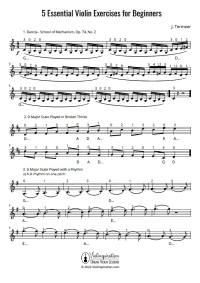
FREE Violin Exercises for Beginners
Improve Your Playing Skills & Technique
1. Intonation
Dancla’s second exercise from his School of Mechanism, Op. 74 is a great way to practice correct finger placement and consistent intonation.
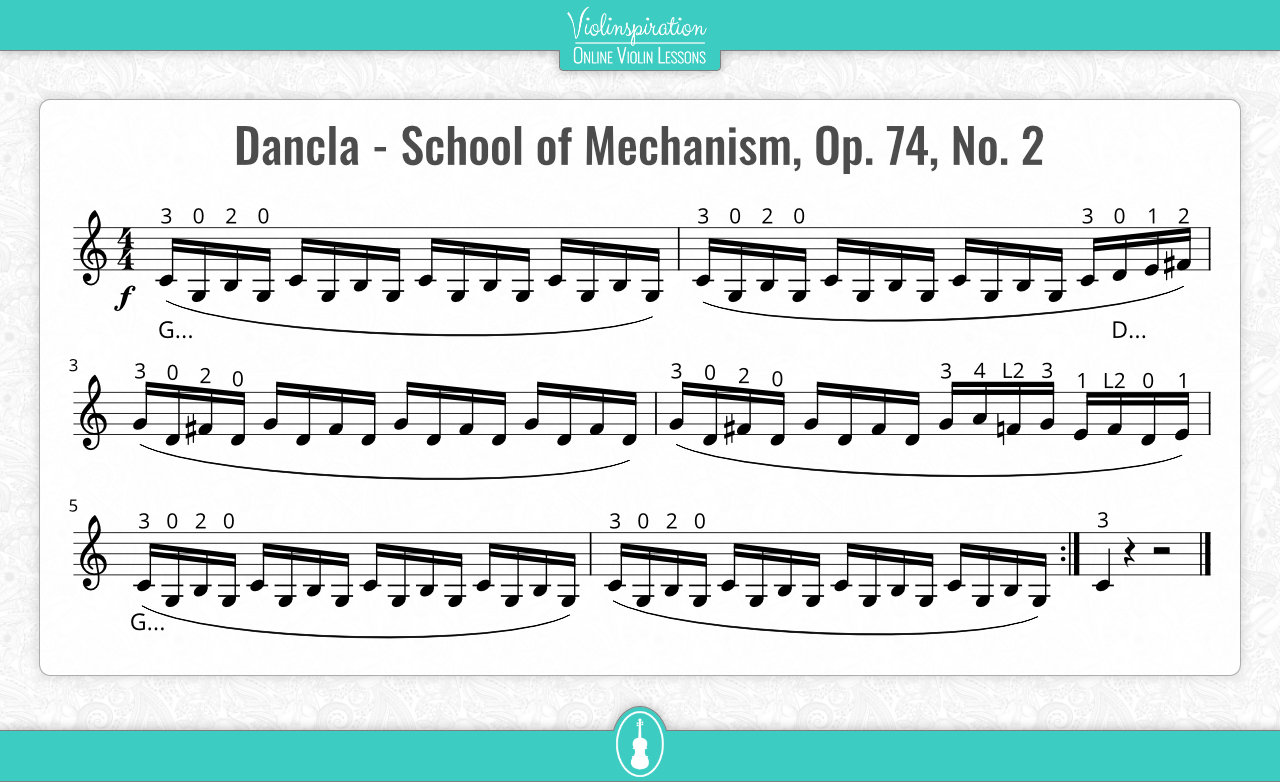
This specific exercise involves playing the same two notes back and forth, with an open string in between each one. Your goal is to make each closed note sound the same pitch after the open string notes, without needing to adjust your finger placement.
This action (playing a note after repeated open strings) will teach you exactly where to place your finger to play that note in tune every single time. You’ll also start to build a beautiful, consistent left-hand frame.
Try repeating Dancla’s exercise on each string so you’re not just practicing intonation on the G string. You might even find it easier to start on the A or E string first and then make your way down.
2. Broken Thirds Pattern
Practicing a scale in separate thirds is an excellent way to get your fingers familiar with a very common pattern in violin music. Just like arpeggios, the separate third pattern pops up in the music of all genres, and it’s a pattern that’s beneficial to practice.
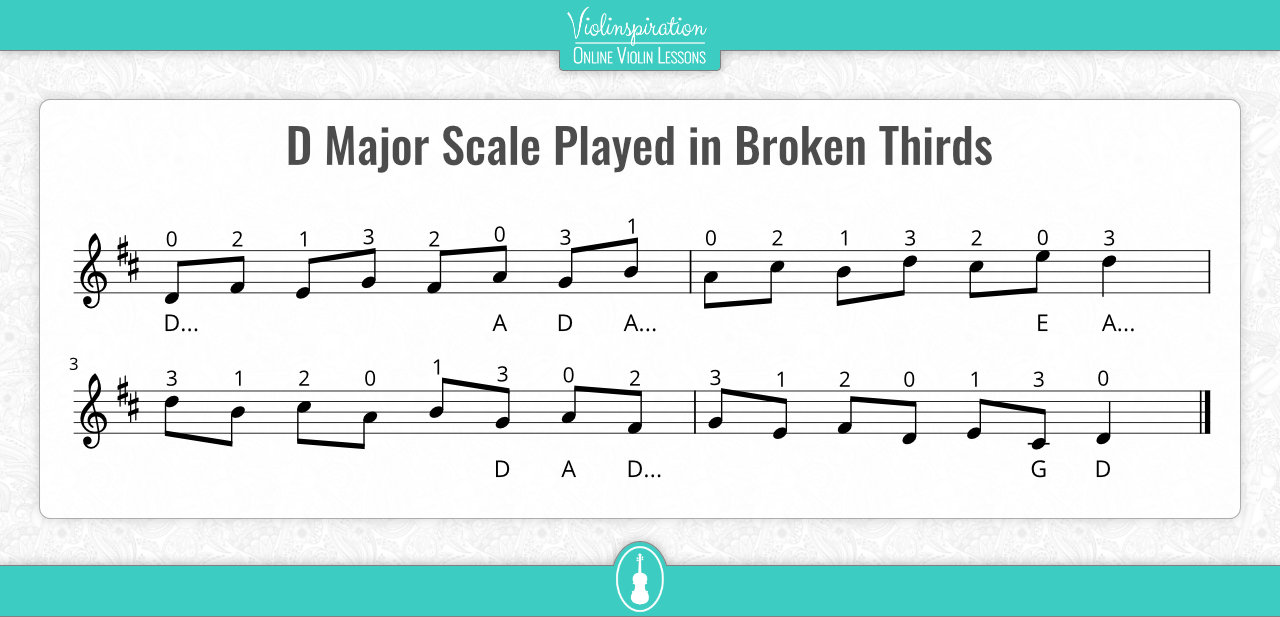
Begin by practicing each note slowly, to carefully tune each and every pitch. Then, once you can play with consistent intonation, bump up the speed bit by bit (practicing with a metronome would be very helpful!) to make the pattern faster.
This is a great skill to develop because we often find passages of notes that skip in violin music. Being able to play a scale in separate thirds will help you master skips, and it’ll start to prepare you to learn double stops.
Want more of a challenge? Try always using the fourth finger instead of open strings to get more fourth finger practice and strengthen it this way!
3. Major Scale with Rhythms
One very important aspect of learning music is having a good sense of rhythm. It can be difficult to understand the different note values and how they interact if you don’t practice rhythm often. So, why not add it to your violin exercises?
Find a few different rhythms, either from the music you’re learning, use my rhythm cards, or get inspired by my metronome with subdivisions, and place them in a jar.
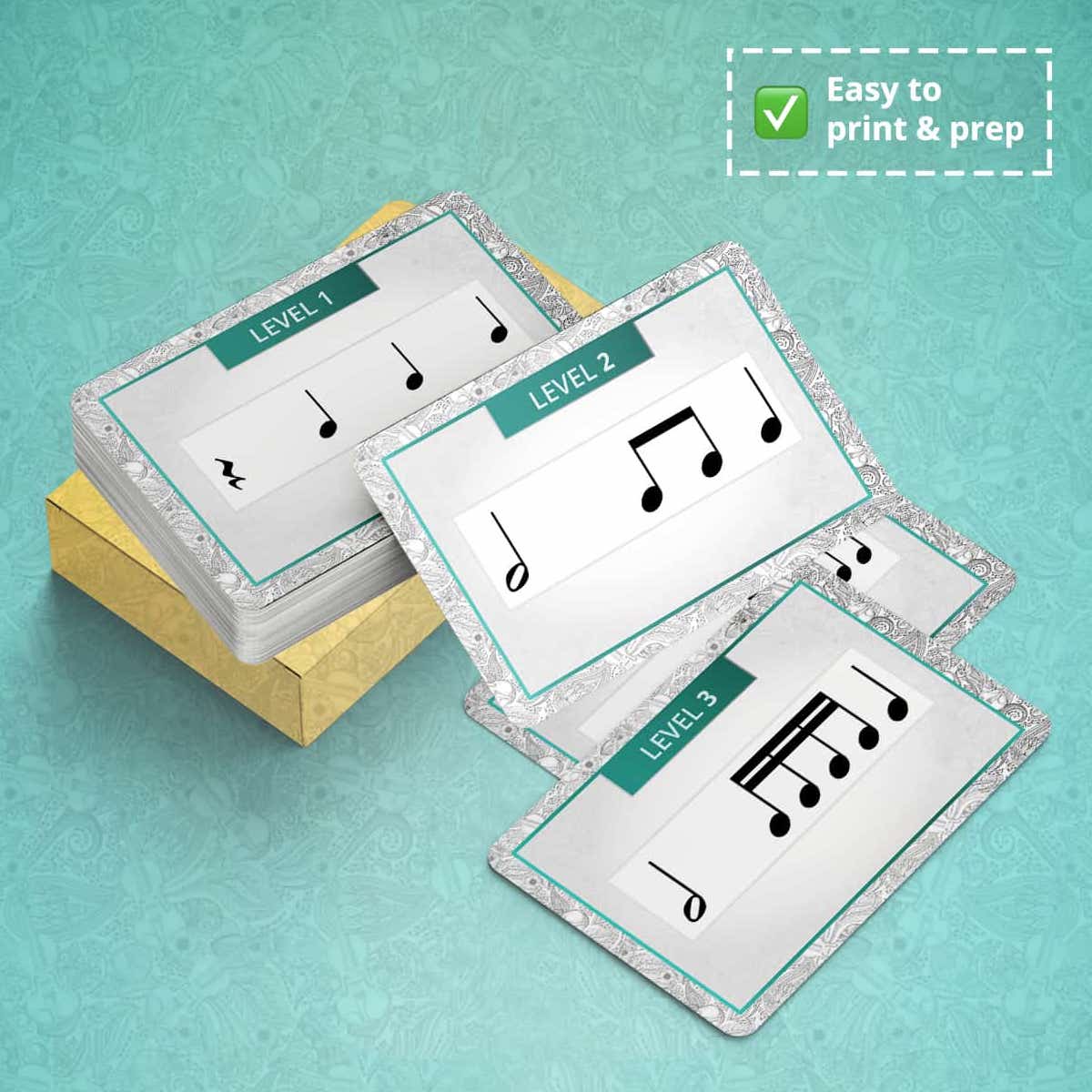
Choose one rhythm at random, and practice a major scale with only that rhythm.
If you don’t have it yet, download here the most common scales for beginners:
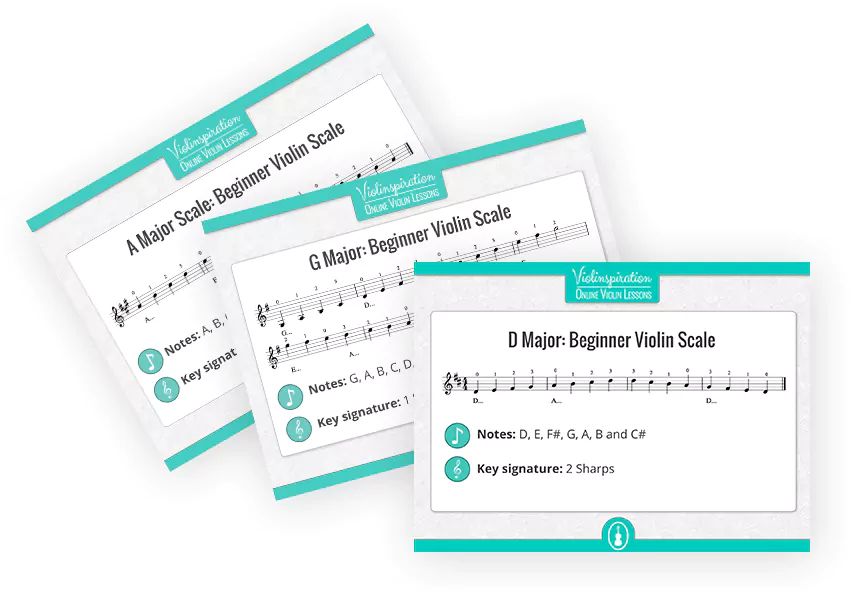
Free Download: 5 Most Common Violin Scales
for Beginners
You can choose to play the full rhythm on each pitch, or you can play one pitch per note in the rhythm. I personally like to play the full rhythm on one pitch up and down the major scale. After that feels comfortable, I play the scale again but now with one pitch per note of the rhythm. You can see an example of this exercise on the G Major scale below – it covers almost all notes in the first position and uses the rhythm of a dotted quarter note and an eight note.
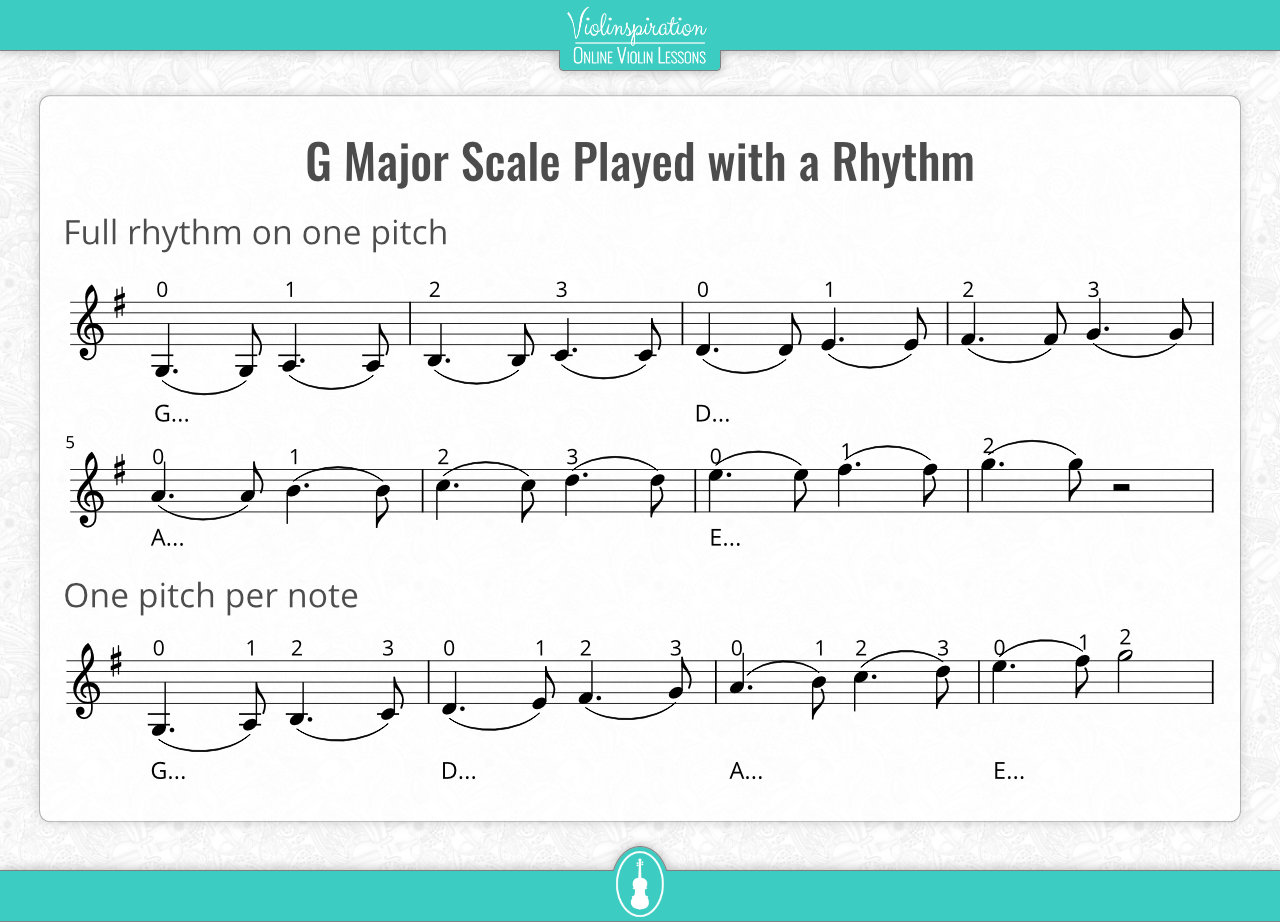
By practicing rhythms in this way, you might find you can read sheet music and understand what it’ll sound like a bit faster.
4. String Crossings
My next exercise will help you master string crossings and it’ll also help your left hand learn the proper posture for double stops.
In this exercise, we’ll rock back and forth between two strings. On the lower string, you’ll work your way up with fingers 1-2-3, and back down, 3-2-1. Repeat the pattern on E and A, A and D, and D and G strings.
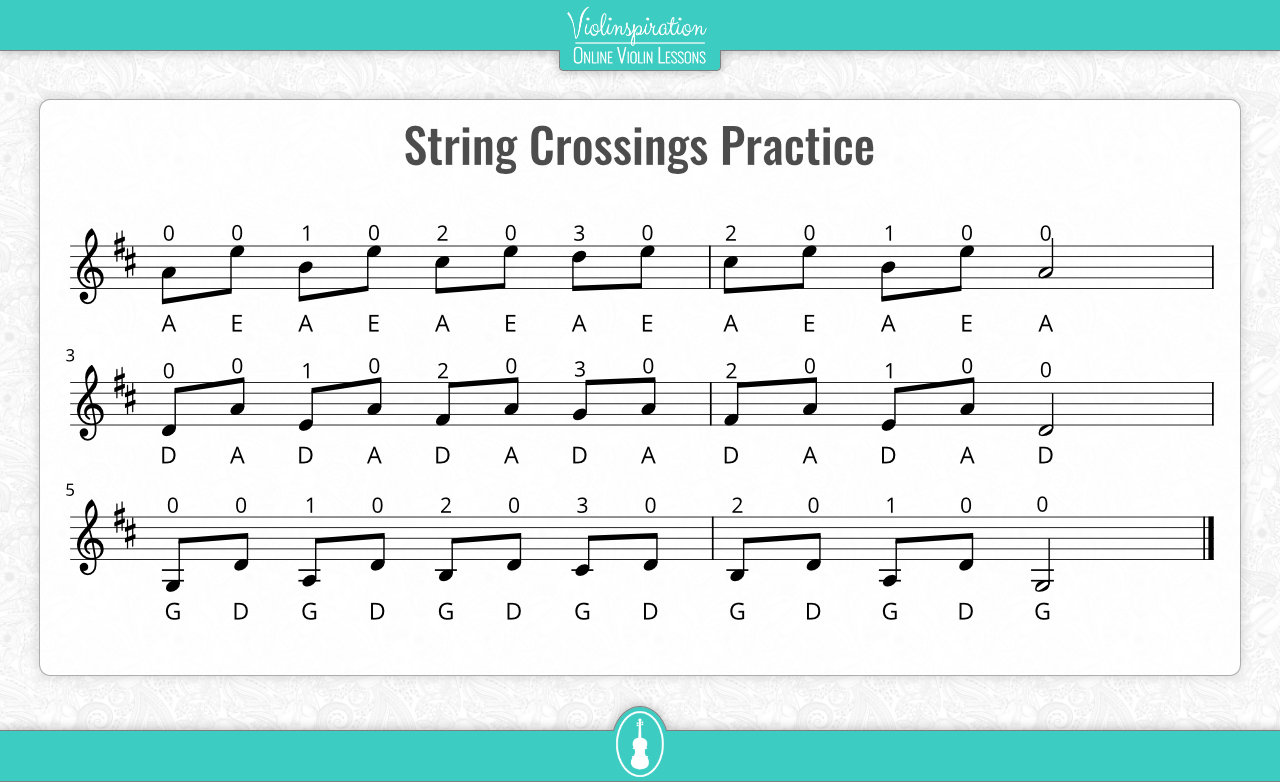
Tip for clean string crossings
Your finger placement is very important in this exercise: in addition to playing the notes in tune, you’ll need to play on your fingertips to avoid bumping the higher string and creating a squeaking sound.
Have a look at the following pictures and double check whether your fingers are nicely curved and touch a string only with the fingertips.
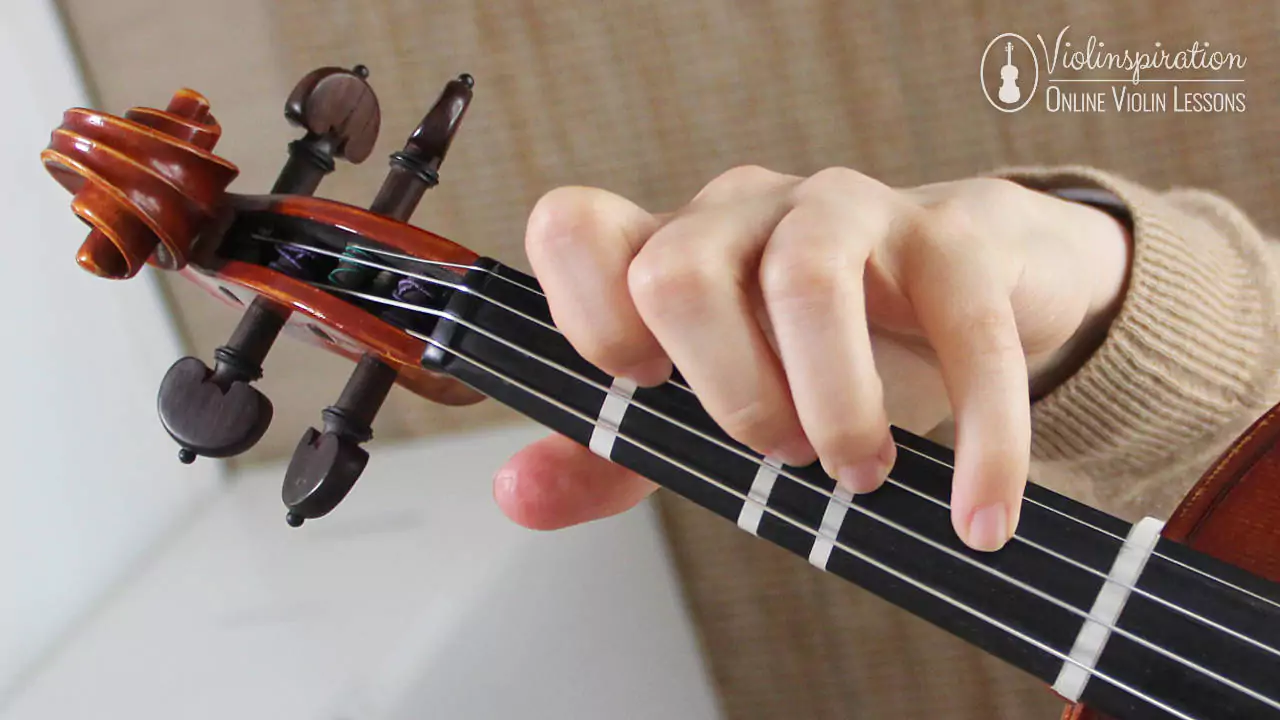
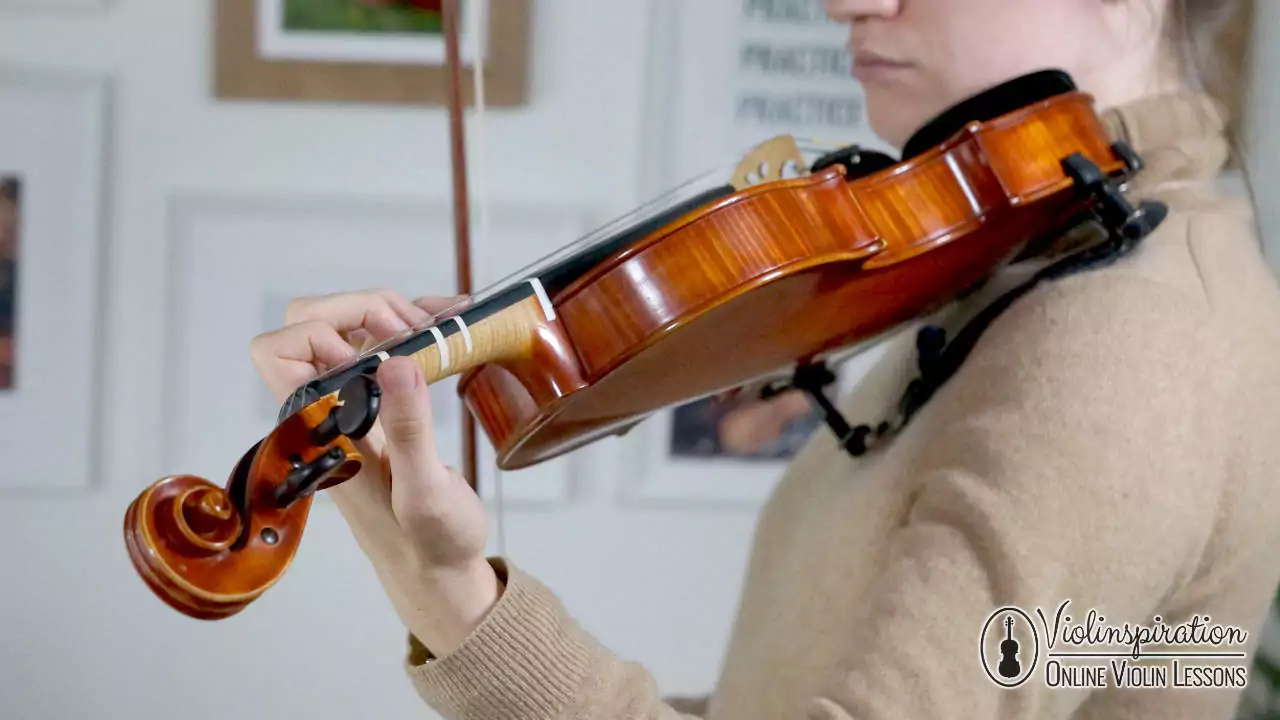
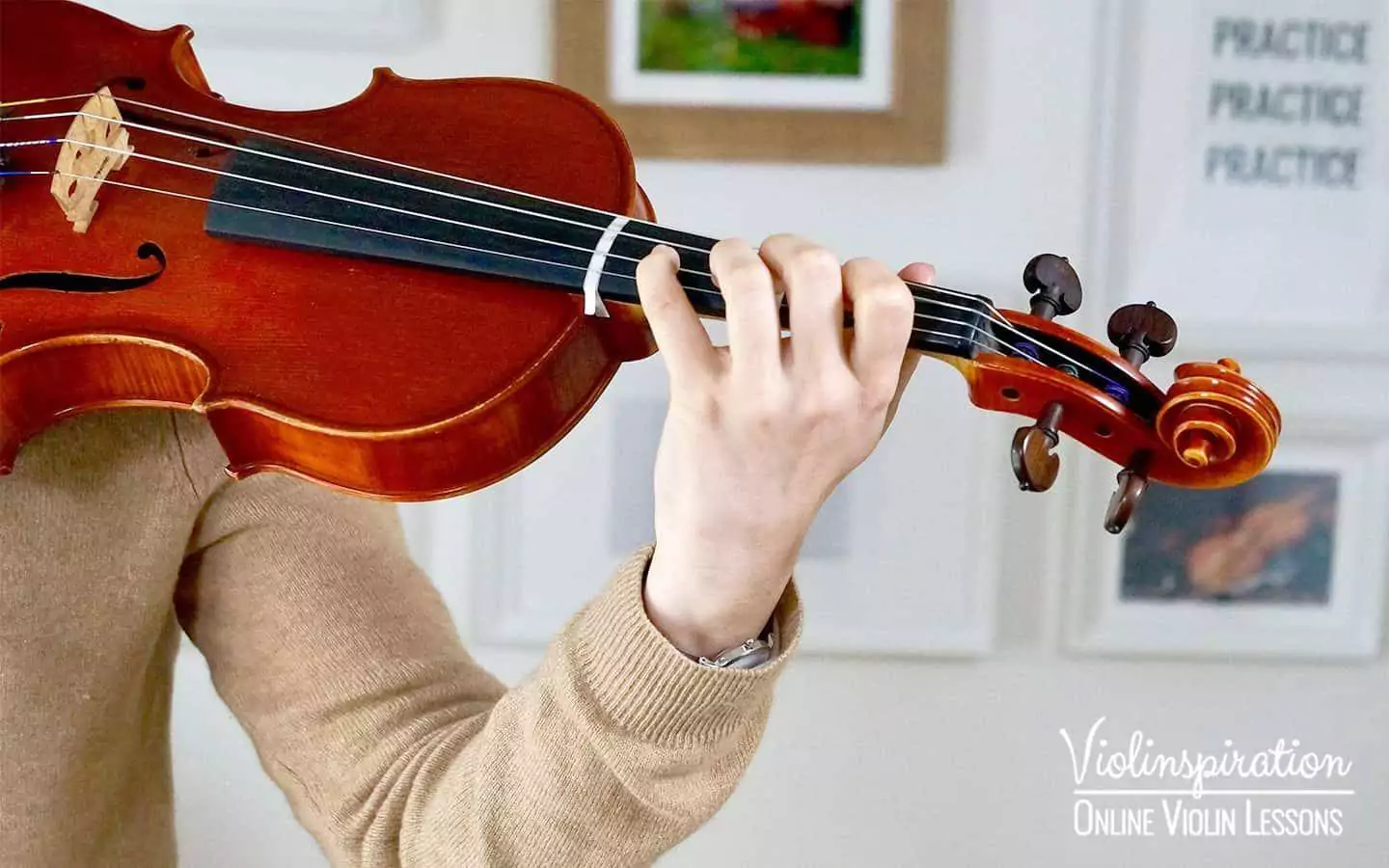
5. Dynamics
Preparation
If you’ve never tried dynamics on the violin, watch my video sharing how to play ALL dynamics in only 15 minutes! You can also download my free contact point guide to achieve a beautiful violin tone. These resources will help you understand what you need to do physically to play each and every dynamic.
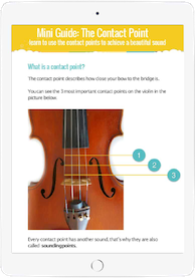
FREE Contact Point Guide
Improve Your Contact Points Technique
Learn how to play various dynamics
There are so many different aspects to consider when focusing on dynamics: bow speed, arm weight, and the placement of the bow; just to name a few. Using warm-up exercises to focus on dynamics is a great way to spend your practice time!
To practice dynamics, choose something that feels simple to play for you, perhaps just a repeated open string, or a scale. Then add one specific dynamic to whatever you’re playing. Try this with every dynamic you can think of.
In the free PDF, I share with you the D Major scale with a few different dynamic variations. Feel free to either use this or be creative and make up your own dynamic exercise!
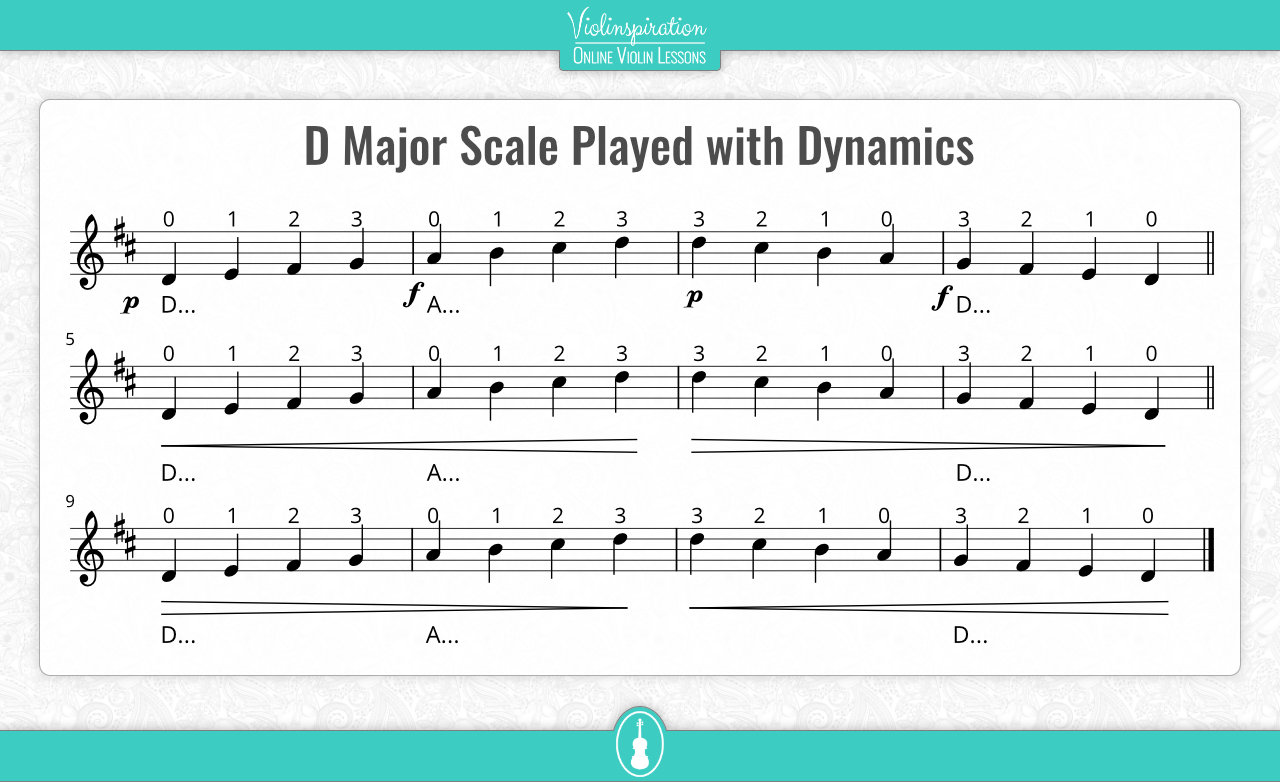
A fun way to spice up this part of your practice session is by using cards in a jar. Write down every dynamic you can think of on a separate piece of paper, and place them all in a jar. When you’re ready to practice your dynamics, choose a piece of paper from the jar at random. Then practice playing just that dynamic!
A few tips for playing dynamics
While learning to play with different dynamics, make sure to apply the following tips:
1. Keep an eye on the contact with the string
When playing forte, be sure all the violin bow hair is making good contact with the string. This will naturally create a big, full sound.
2. Adjust the pressure
You might need a different amount of weight or pressure in your bow arm for each dynamic. For example, I keep my arm heavy for forte and very light for piano.
3. Bow evenly
When you practice dynamics, try to make a consistent volume in all parts of the bow, and in each bow direction. Down bows are naturally stronger and louder than up bows: the frog of the bow is heavier than the tip, and our arm weight is concentrated right there.
Experiment to find the right balance on each bow stroke—can you make your down bows as quiet as your up bows, and your up bows as loud as your down bows?
FAQ
How often should beginners practice violin?
Beginner violinists should start by practicing in 15-minute sessions three times a week. This is a great starting place to build a practice routine. After a few weeks, bump up your practice sessions to 30 minutes. This will also help increase your stamina to play for longer periods of time.
Check out my other posts to get more tips on practicing the violin:
- How to Practice the Violin to Bring the Best Out of You
- How to Build Your Own Violin Practice Routine
How long does it take to become good at the violin?
How long it takes to become good at the violin depends on how much you practice, what your prior musical knowledge is like, whether or not you take lessons, and what you consider as “good.” Based on that you may become a good player in 10 years, in 20 years, or anything in between.
Learning the violin is a long process that takes a lot of dedication. It’s normal for beginner violinists to take about a year to learn their first classical piece. If you dedicate several years to learning the violin, you’ll be more likely to master more and more pieces of classical music.
Click here to read my thoughts on this topic and watch the video where I show you exemplary pieces you can learn in given timeframes.
Conclusion
When you’re just beginning to learn an instrument, honing your skill and technique is very important to build a strong foundation to work off of. I hope you can repeat these violin exercises often, and incorporate them into your own practice routine.

FREE Violin Exercises for Beginner
Improve Your Playing Skills & Technique























